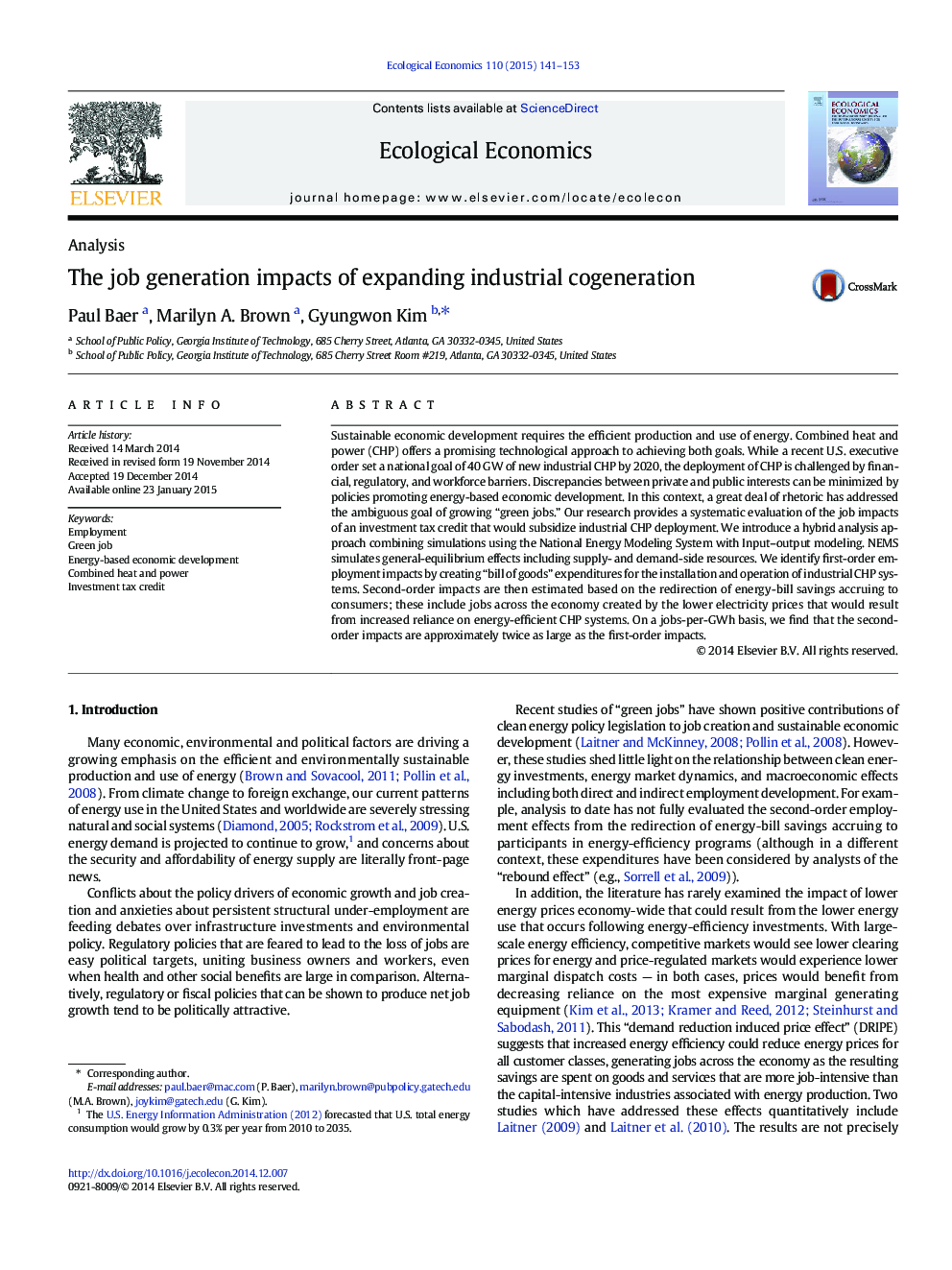| کد مقاله | کد نشریه | سال انتشار | مقاله انگلیسی | نسخه تمام متن |
|---|---|---|---|---|
| 5049475 | 1476369 | 2015 | 13 صفحه PDF | دانلود رایگان |
- Barriers to the deployment of CHP are numerous.
- A range of investment tax credits for CHP is examined.
- First-order employment impacts would result from the installation and operation of industrial CHP.
- Second-order impacts are estimated based on the redirection of energy-bill savings accruing to consumers.
- On a jobs per GWh basis, second-order impacts are approximately twice as large as first-order impacts.
Sustainable economic development requires the efficient production and use of energy. Combined heat and power (CHP) offers a promising technological approach to achieving both goals. While a recent U.S. executive order set a national goal of 40Â GW of new industrial CHP by 2020, the deployment of CHP is challenged by financial, regulatory, and workforce barriers. Discrepancies between private and public interests can be minimized by policies promoting energy-based economic development. In this context, a great deal of rhetoric has addressed the ambiguous goal of growing “green jobs.” Our research provides a systematic evaluation of the job impacts of an investment tax credit that would subsidize industrial CHP deployment. We introduce a hybrid analysis approach combining simulations using the National Energy Modeling System with Input-output modeling. NEMS simulates general-equilibrium effects including supply- and demand-side resources. We identify first-order employment impacts by creating “bill of goods” expenditures for the installation and operation of industrial CHP systems. Second-order impacts are then estimated based on the redirection of energy-bill savings accruing to consumers; these include jobs across the economy created by the lower electricity prices that would result from increased reliance on energy-efficient CHP systems. On a jobs-per-GWh basis, we find that the second-order impacts are approximately twice as large as the first-order impacts.
Journal: Ecological Economics - Volume 110, February 2015, Pages 141-153
